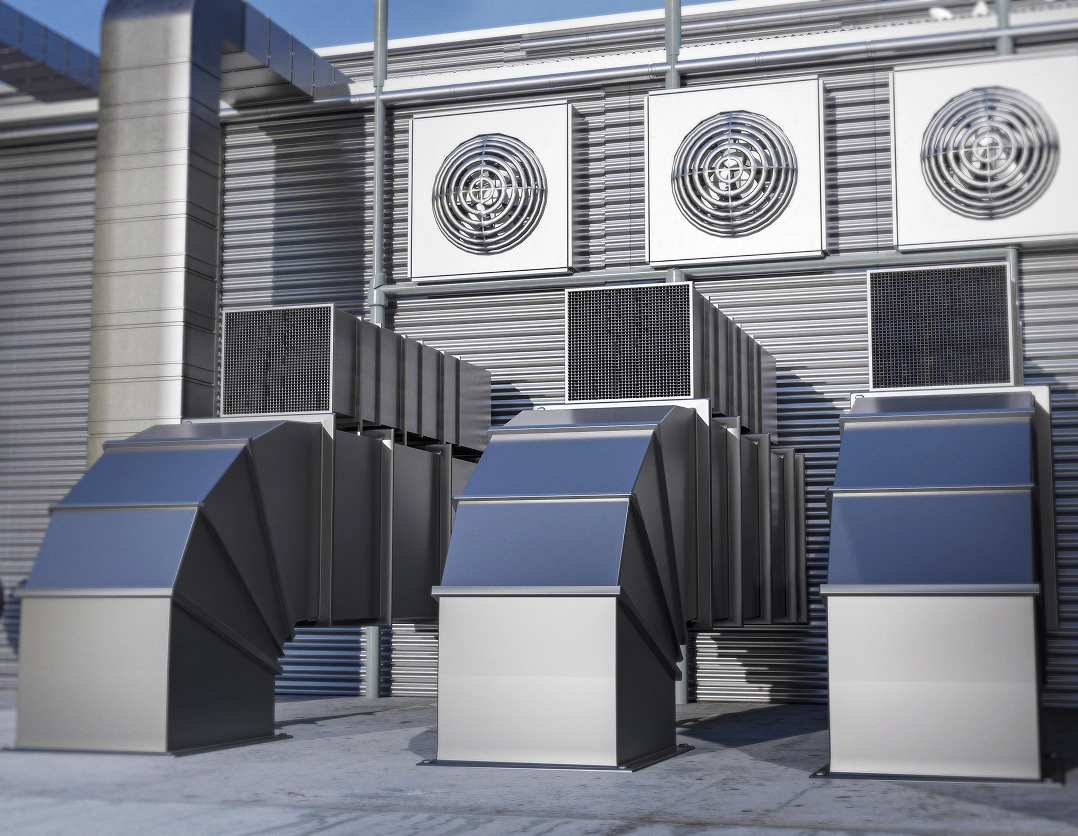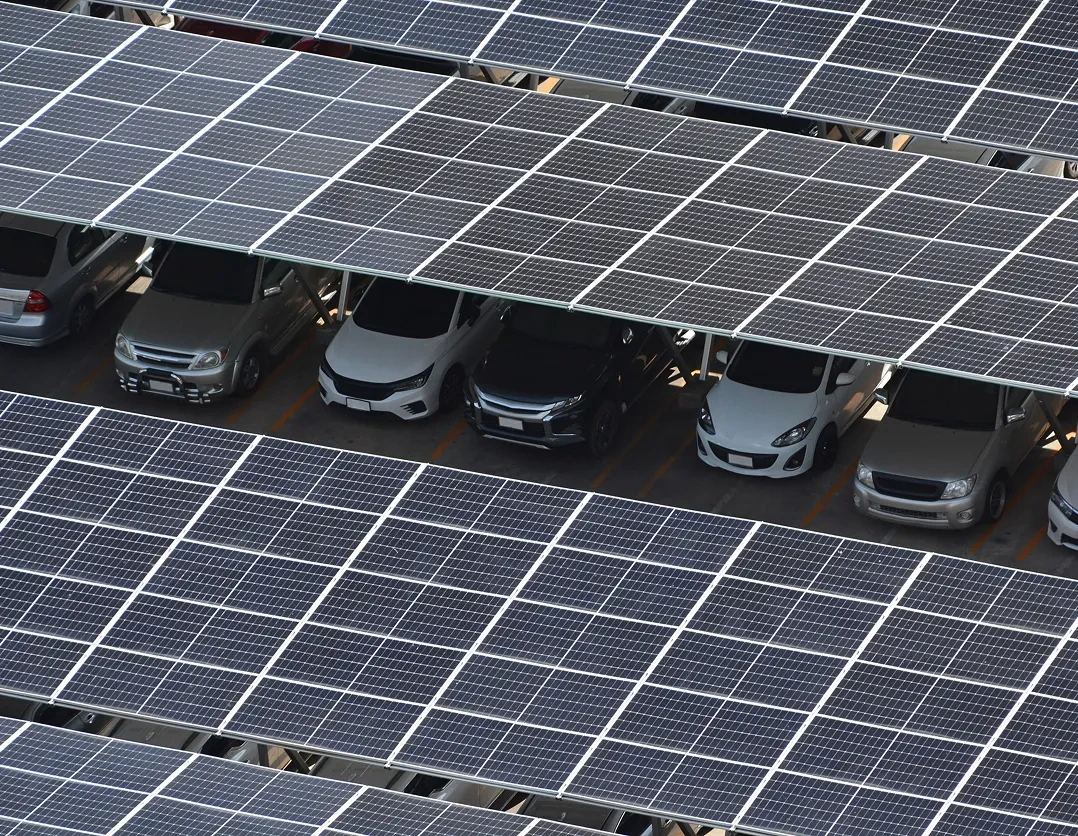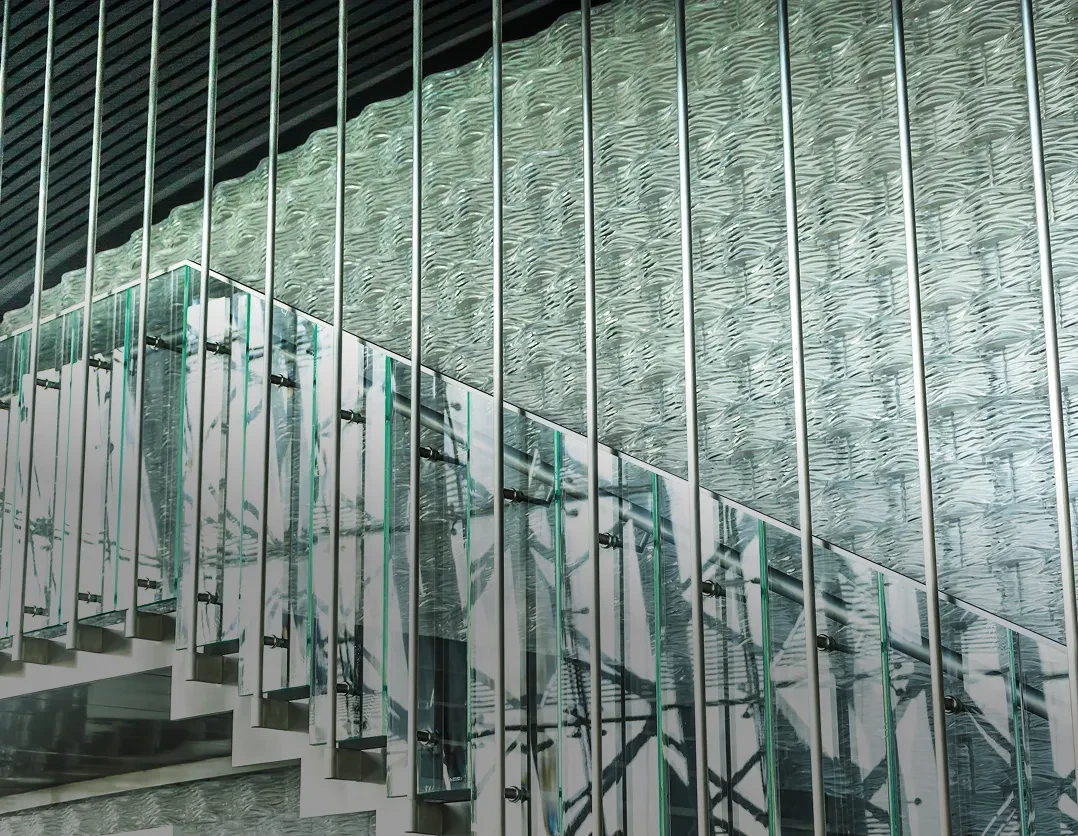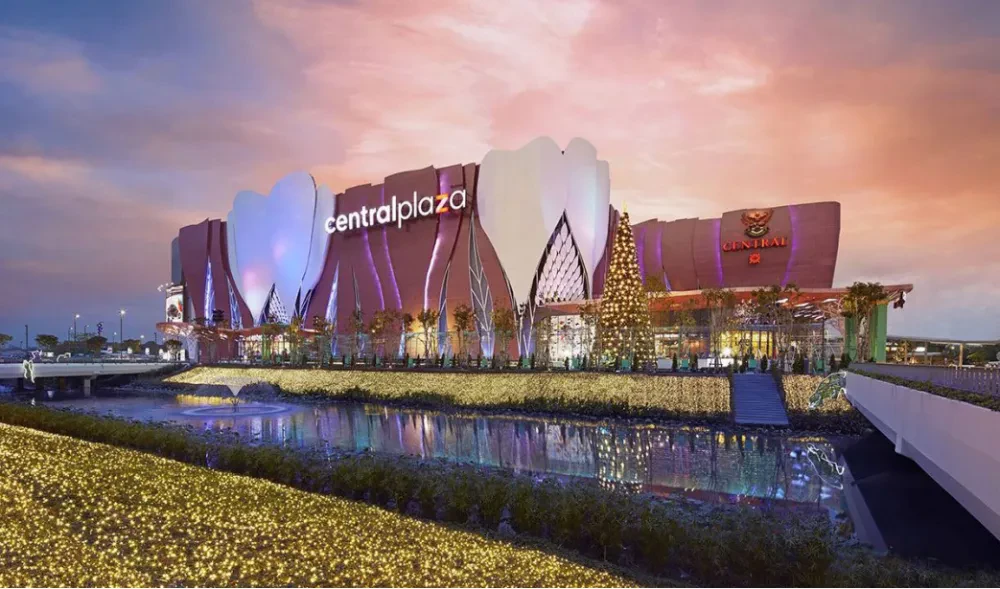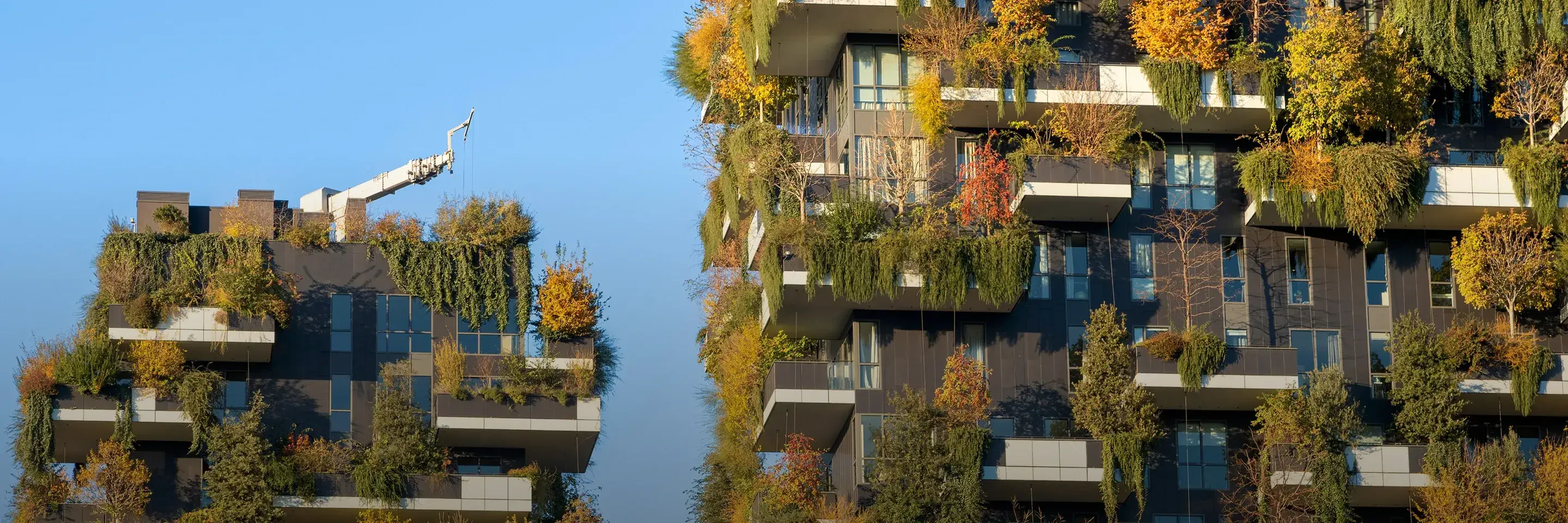
Climate Change Management
Goal and Performance Highlights

Performance 2024
Goal
Short term 2024: 17.0%
Reduction in Scope 1, 2, and 3 greenhouse gas emissions by 2024
Medium term 2030: 46.2%
Reduction in greenhouse gas emissions in Scope 1, 2, and 3 compared to the base year 2019 by 2030.
Long term 2050:
Net Zero emission
Challenges and Opportunities
The global transition toward reducing greenhouse gas (GHG) emissions is no longer optional—it is imperative. Central Pattana Public Company Limited recognizes that transitioning to a low-carbon economy is not an overnight process. It requires sustained investment, advanced technologies, and collaboration across the value chain. One key challenge is the high upfront cost of GHG reduction measures. Additionally, the Company must prepare for rising costs associated with future carbon pricing mechanisms if existing measures prove insufficient. The path to Net Zero also depends on cooperation from tenants and partners to transform their operations and invest in green technologies—factors that may impact product pricing, service delivery, and rental rates. Moreover, the Company faces physical risks from climate change, including floods and droughts, which could disrupt operations. Increasingly stringent environmental regulations will also demand continual adaptation.
Despite these challenges, Central Pattana sees clear opportunities. Improving energy efficiency and reducing resource use not only lowers long-term costs but also strengthens the Company’s position as a sustainability leader. These actions enhance stakeholder trust and attract environmentally conscious customers. The Company also prioritizes climate education for employees, ensuring that all internal stakeholders play a role in advancing sustainability efforts.
Management Approach and Value Creation
GHG Management: Advancing Toward Net Zero
Central Pattana is committed to reducing its environmental impact through a systematic approach to GHG emissions management. The Company continuously enhances its emissions reduction measures and energy efficiency programs. It has adopted international standards such as the Carbon Footprint for Organization (CFO) in line with ISO 14064-1, enabling precise tracking and control of GHG emissions across operations. A Net Zero Pathway has been established with near-term goals for 2030 and long-term targets for 2050, focusing on both operational carbon and embodied carbon from materials and construction.
Development of Net Zero Pathway Aligned with SBTi
Central Pattana has publicly committed to achieving Net Zero emissions by 2050 and has submitted an official intent to the Science Based Targets initiative (SBTi) to develop its Net Zero Pathway in alignment with the 1.5°C global temperature goal. The Company plans to obtain full validation of its targets by 2025. It also actively supports Thailand’s national climate policies and the global Paris Agreement through participation in the Thailand Carbon Neutral Network, recognized by the Thailand Greenhouse Gas Management Organization (TGO). Central Pattana was awarded the highest-level Climate Action Leading Organization recognition (for emissions measurement and reduction) and serves as a founding member of RE100 Thailand Club, demonstrating strong commitment to achieving 100% renewable energy use as soon as possible.
Near-Term Plan to Reduce Scope 1 and 2 GHG Emissions by 2030 based on Net Zero Pathway aligned with SBTi
GHG Reduction Measures
Following the Company’s official commitment to achieve Net Zero emissions by 2050 in accordance with the Science Based Targets initiative (SBTi), Central Pattana has reviewed and revised its policies and strategic plans to support this ambition. In particular, the Company has strengthened its greenhouse gas (GHG) reduction policies to comprehensively cover Scope 1, Scope 2, and Scope 3 emissions. The framework for reducing emissions across these three scopes has been structured into two primary focus areas: GHG emissions reduction from operations, and GHG emissions reduction from construction activities.
Operational GHG Emissions
Proportion of GHG Emissions from Operations in 2024
According to the Company’s 2024 GHG emissions analysis, Scope 1 and Scope 2 emissions from operations accounted for 40% of total emissions, primarily from electricity consumption. The remaining 60% was attributed to Scope 3 emissions, mainly from electricity and LPG use by retail tenants (41% of Scope 3) and landfill waste (19%). Notably, the Company recorded no Scope 1 emissions from fuel combustion or fluorocarbon leakage within its operations.
Scope 2: GHG Emissions Reduction from Operations

The Company continued implementing electricity reduction measures across its nationwide shopping centers under its energy conservation plan. In 2024, a total of 54 projects were carried out, with a combined investment of THB 75 million, aiming to reduce electricity consumption by 5,655 megawatt-hours (MWh) per year. As of the reporting period, 45 projects (83%) had been completed.

Energy efficiency was further enhanced through the adoption of new technologies and design approaches, including upgrades to air-conditioning systems, installation of solar panels, and application of passive design features to reduce heat gain—minimizing energy use from the outset of each development.
Regarding the use of renewable energy, the Company installed solar PV systems in newly opened projects. One project launched in 2024 had an installed capacity of 1.535 MWp, enabling the generation of electricity equivalent to 10% of the building’s total energy consumption.
Together, these initiatives mark significant progress in reducing electricity usage and continuously contribute to the reduction of Scope 2 GHG emissions, supporting both the Company’s mid-term targets and Net Zero 2050 Roadmap.
Scope 3: GHG Emissions Reduction in the Value Chain
In 2024, Central Pattana continued to implement structured measures to reduce Scope 3 GHG emissions, which were found to account for 61% of the Company’s total emissions. The main sources include electricity usage by retail tenants and landfill waste disposal.
The Company expanded its Central Pattana Green Partnership Initiative into its second year, under the theme “Know It, Act on It, Cut It for Real.” The program focused on collaboration with business partners to reduce energy consumption and waste generation in retail operations. In 2024, 2,250 stores across 165 brands participated. The Company provided knowledge-sharing, performance monitoring tools, and carbon planning support with the target of reducing over 700 tCO₂e annually from tenant operations.
Additionally, the Company continued to promote sustainable transportation through the expansion of EV charging stations. In 2024, 537 charging bays were installed across 40 shopping centers, representing a 60% increase from the previous year. The number of DC fast-charging stations was also increased to meet growing demand. These efforts helped avoid approximately 3,070 tCO₂e per year, calculated based on fossil fuel substitution in transportation.
To further improve Scope 3 emissions management, the Company leveraged digital technologies, such as the SERVE platform for real-time tenant energy tracking, and AI- and IoT-enabled smart systems to manage energy and cooling operations efficiently. These solutions support electricity reduction without compromising customer experience and facilitate long-term sustainable energy planning.
These initiatives represent a key strategic pillar in reducing value chain emissions and reflect the Company’s strong commitment to partnering with stakeholders to achieve Net Zero by 2050 in an effective and measurable way.
Enhancing Energy Efficiency to Reduce Greenhouse Gas Emissions
Central Pattana Public Company Limited recognizes that energy efficiency is a critical factor in reducing greenhouse gas (GHG) emissions. The Company has implemented various energy efficiency measures, including the installation of Building Management Systems (BMS) to control and optimize energy use in shopping centers.
In addition, ongoing upgrades are made to equipment and systems such as high-efficiency LED lighting and Smart HVAC systems, which help reduce energy consumption without compromising the user experience. The Company also uses refrigerants with low Global Warming Potential (GWP) and zero Ozone Depletion Potential (ODP) to minimize long-term environmental impacts.
Using Renewable Energy to Reduce Fossil Fuel Dependence
Central Pattana prioritizes increasing the share of renewable energy within its operations. The Company has installed solar power systems on shopping center rooftops (Solar Rooftop) and parking structures (Solar Carpark) to support clean energy use.
It is also exploring floating solar power systems (Solar Floating) for suitable water areas to maximize renewable energy production. Additionally, EV charging stations have been installed at multiple shopping centers to provide convenience for customers and reduce fossil fuel combustion in transportation—an important step toward lowering transport-related emissions.
Leveraging Digital Technologies for Carbon Reduction
Over recent years, Central Pattana has invested in digital technologies to support energy management and reduce GHG emissions. The Company has enhanced the SERVE platform with new reporting features that enable tenants to monitor and track electricity usage efficiently and consistently.
It has also deployed AI and IoT technologies to manage cooling systems via Chiller Plant Management, and utilizes an Energy Management Information System (EMIS) to analyze real-time energy data for continuous improvement.
Promoting Collaboration with Partners for Sustainable Environmental Stewardship
To ensure effective greenhouse gas management, Central Pattana Public Company Limited is committed to fostering collaboration across sectors, particularly with business partners, through the following initiatives:
Green Lease Policy
- All tenants are required to use LED lighting exclusively within their leased premises to promote energy efficiency and reduce greenhouse gas emissions.
- The company has implemented submetering systems for utilities management within leased areas, covering electricity, water, and gas, to enable accurate and transparent billing based on actual consumption. Additionally, a differentiated waste management fee structure has been introduced, particularly for food-related businesses, based on the volume and type of waste generated. This approach is designed to incentivize resource efficiency and proper waste segregation to advancing sustainable environmental practices.
- Central Pattana has developed the SERVE platform, a utility reporting and benchmarking system that empowers tenants to monitor and take responsibility for their energy usage. This initiative encourages behavioral changes that lead to more efficient electricity consumption.
Green Partnership Program
- Central Pattana actively builds a network of tenant partners who prioritize energy reduction and environmentally responsible business practices.
- The company provides tenants with knowledge and guidance on energy-saving solutions and promotes public recognition of businesses that align with sustainability goals.
Green Procurement Policy
- Central Pattana has strengthened its collaboration with suppliers to enhance green procurement practices, increasing the proportion of environmentally friendly products used in its operations. This approach aims to generate tangible positive impacts on the environment.
Climate Risk Assessment and Strategic Planning
Alongside operational measures, Central Pattana also emphasizes systemic climate risk assessment by adopting the framework of the Task Force on Climate-related Financial Disclosures (TCFD) to guide its environmental risk analysis and disclosures.
The Company focuses on two key dimensions:
- Physical Risks – e.g., risks from floods, droughts, and heatwaves
- Transition Risks – e.g., carbon tax measures, GHG emissions standards, and pressure from financial institutions and investors
Findings from these assessments are integrated into the Company’s strategic planning, enabling proactive investment in projects located in high-risk areas. The results also inform the development of strategic collaboration frameworks with business partners to support adaptation to a low-carbon economy in a flexible and effective manner.


